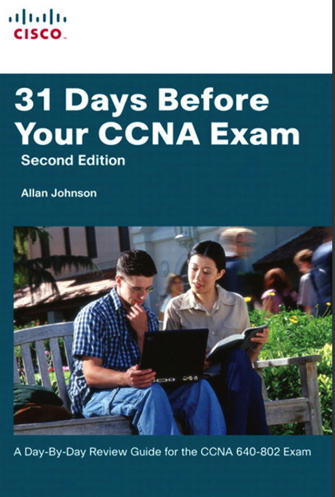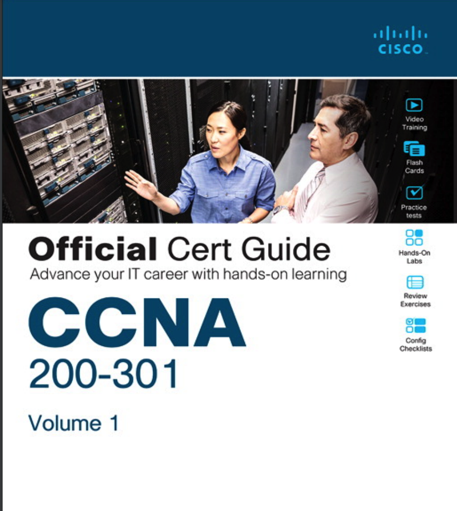Exclusive Courses | Cisco CCNA 200-301 LAB
Classes of CCNA Lab - Study CCNA at SPOTO Learning
- Experienced instructors with industry expertise
- Access to official guides and materials
- Covers all exam topics thoroughly
- Flexible study at your own pace
- Support for exam service
- Anytime access to study resources
What you'll learn
Training Course Outline
Cisco CCNA 200-301 LAB
1.STP (Spanning Tree Protocol)
2.STP Election (Spanning Tree Protocol)
3.EtherChannel
4.EtherChannel Troubleshooting
5.InterVLAN Routing (SVI, Router on a Stick)
6.InterVLAN Routing Troubleshooting
7.OSPF (Part 1: Single Area)
8.OSPF (Part 2: Multi-Area)
9.OSPF Troubleshooting
10.OSPFv3 for IPv6
11.EIGRP
12.EIGRP Troubleshooting
13.EIGRP for IPv6
14.PPP with PAP and CHAP Authentication
15.PPP Troubleshooting
16.MultiLink PPP
17.PPPoE
18.GRE
19.GRE Troubleshooting
20.BGP
21.BGP Troubleshooting
22.HSRP
23.HSRP Troubleshooting
24.IPv4 and IPv6 ACLs
25.ACL Troubleshooting
26.SPAN
27.IP SLA
28.Review Configuration Lab 3
29.Review Troubleshooting Lab 3
Training Options
Self Paced Learning
- Lifelong access to high-quality content
- Curated by industry experts
- Customized learning progress
- 24/7 learner assistance and support
- Follow the latest technology trends
Exam Dump
- 100% Real Exam Practice Tests
- 100% Verified Exam Questions & Answers
- 100% Guarantee Passing Rate
- Average 7 Days to Practice & Pass
Description
Level up your career in IT with this video-based online training course designed to help you master foundational networking knowledge-LAB and succeed on the CCNA 200-301 exam.
Pre-requisites
basic understanding of Networking devices Any server knowledge/ already CCNA will be an adantage but not cumpulsory

31 Days before your CCNA exam
A Day-By-Day Review Guide for the CCNA Exam

CCNA 200-301 Official Cert Guide Library
CCNA 200-301 Official Cert Guide Library is a comprehensive review and practice package for the latest CCNA exam and is the only self-study resource approved by Cisco.
CCNA Exam & Certification
What is CCNA Lab?
A CCNA lab is a hands-on training environment where learners practice configuring, managing, and troubleshooting Cisco networks. It uses tools like Cisco Packet Tracer, GNS3, or physical hardware (routers, switches) to simulate real-world scenarios. Labs focus on core topics such as VLANs, routing protocols (OSPF, EIGRP), subnetting, and network security. This practical experience is critical for mastering skills tested in the CCNA exam and preparing for real IT roles. Labs bridge theoretical knowledge with actionable expertise, enabling candidates to build, optimize, and debug networks in alignment with Cisco's best practices and modern infrastructure demands.
What Skills does the Lab Include?
CCNA labs develop technical proficiency in:
- Device Configuration: Setting up routers/switches, VLANs, and inter-VLAN routing.
- Troubleshooting: Diagnosing connectivity, ACL, or DHCP issues.
- Network Security: Implementing port-security, SSH, and VPNs.
- Automation: Using Python scripts or Ansible for basic network tasks.
- Protocol Mastery: Configuring OSPF, IPv6, NAT, and QoS.
These skills align with CCNA exam objectives, emphasizing operational fluency in Cisco environments and familiarity with SDN (Software-Defined Networking) principles for scalable, automated infrastructures.
How do you Practice the CCNA Lab?
- Simulation Tools: Use Cisco Packet Tracer or GNS3 for virtual labs.
- Structured Scenarios: Follow lab guides (e.g., Cisco's NetAcad courses) to replicate network setups.
- Real Hardware: Practice on physical devices if accessible.
- Community Challenges: Join platforms like Reddit's r/ccna for lab exercises.
- Troubleshooting Drills: Simulate network failures and practice fixes.
Focus on repetitive configuration tasks (e.g., setting up VLANs) and gradually tackle complex multi-device topologies. Pair labs with theory to reinforce concepts like subnetting or routing tables.
How do you get Hands-on Experience with the CCNA?
- Virtual Labs: Leverage free platforms like Cisco's Sandbox or Packet Tracer.
- Home Lab Kits: Invest in used Cisco gear or low-cost routers/switches.
- Cloud Labs: Subscribe to services like Boson NetSim for guided scenarios.
- Internships/Entry-Level Roles: Seek roles like Network Technician for real-world exposure.
- Certification Courses: Enroll in CCNA training programs with lab components.
Consistent practice, coupled with progressively challenging projects (e.g., building a multi-site WAN), solidifies skills. Document configurations and troubleshoot errors to build problem-solving agility, ensuring readiness for both exams and job demands.